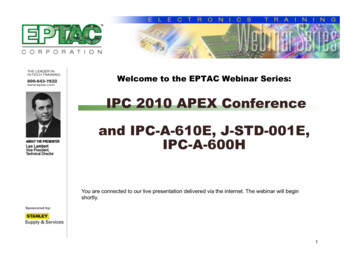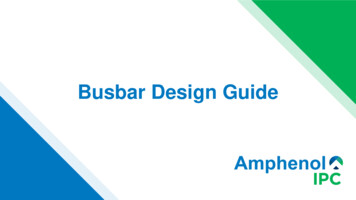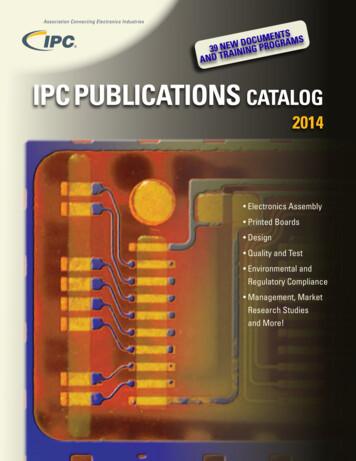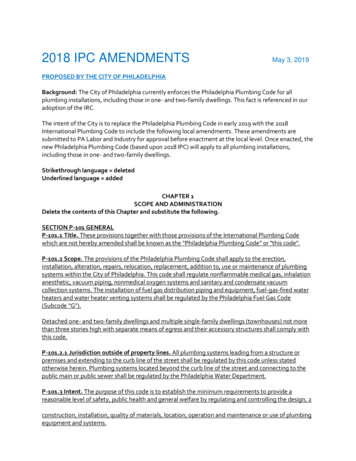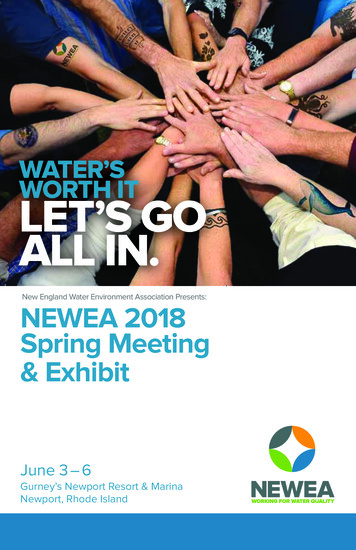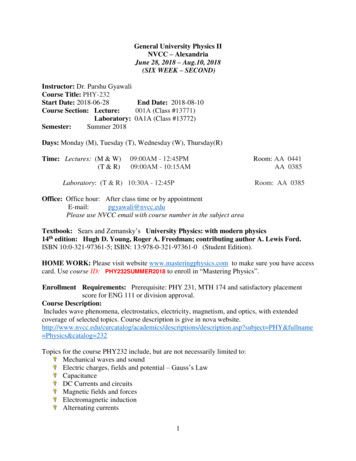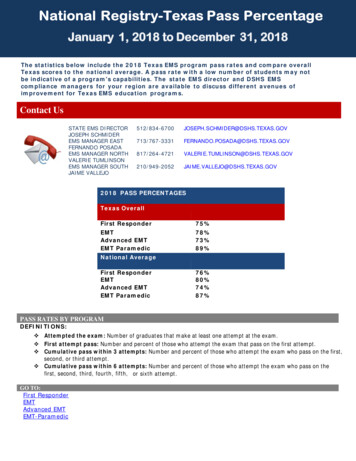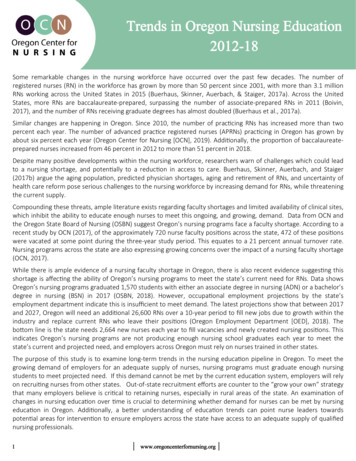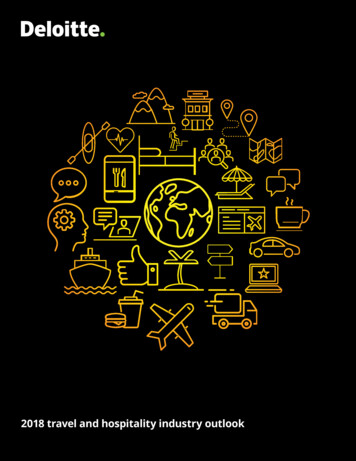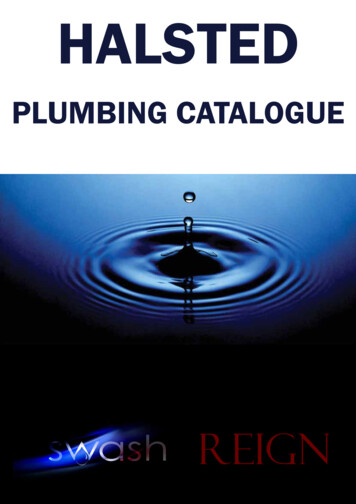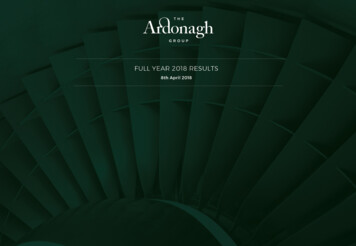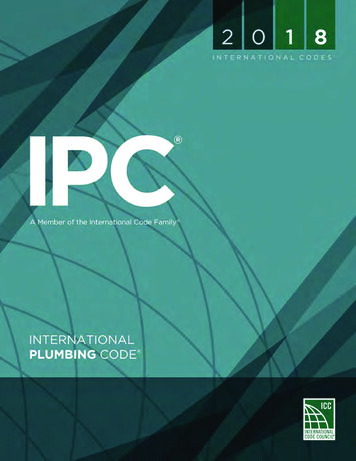
Transcription
2 0 1 8INTERNATIONAL CODES 2018 I-CODE BONUS OFFERIPCGet a free 45-day online subscriptionto ICC’s premiumACCESS 2018 I-CodesComplete Collection. Test drive manypowerful, time-saving tools available to youfrom premiumACCESS. To activate yourbonus, visit www.iccsafe.org/codebonus. A Member of the International Code Family INTERNATIONALPLUMBING CODE Copyright 2017 ICC. ALL RIGHTS RESERVED. Accessed by Eric Fitch on May 15, 2018 8:17:14 AM pursuant to License Agreement with ICC. No further reproduction ordistribution authorized. ANY UNAUTHORIZED REPRODUCTION OR DISTRIBUTION IS A VIOLATION OF THE FEDERAL COPYRIGHT ACT AND THE LICENSEAGREEMENT, AND SUBJECT TO CIVIL AND CRIMINAL PENALTIES THEREUNDER.
2018 International Plumbing Code First Printing: August 2017ISBN: 978-1-60983-745-7 (soft-cover edition)ISBN: 978-1-60983-744-0 (loose-leaf edition)COPYRIGHT 2017byINTERNATIONAL CODE COUNCIL, INC.Date of First Publication: August 31, 2017ALL RIGHTS RESERVED. This 2018 International Plumbing Code is a copyrighted work owned by the International CodeCouncil, Inc. Without advance written permission from the copyright owner, no part of this book may be reproduced, distributedor transmitted in any form or by any means, including, without limitation, electronic, optical or mechanical means (by way ofexample, and not limitation, photocopying or recording by or in an information storage retrieval system). For information on userights and permissions, please contact: Publications, 4051 Flossmoor Road, Country Club Hills, IL 60478. Phone 1-888-ICCSAFE (422-7233).Trademarks: “International Code Council,” the “International Code Council” logo, “ICC,” the “ICC” logo, “InternationalPlumbing Code,” “IPC” and other names and trademarks appearing in this book are trademarks of the International Code Council, Inc., and/or its licensors (as applicable), and may not be used without permission.PRINTED IN THE U.S.A.Copyright 2017 ICC. ALL RIGHTS RESERVED. Accessed by Eric Fitch on May 15, 2018 8:17:14 AM pursuant to License Agreement with ICC. No further reproduction ordistribution authorized. ANY UNAUTHORIZED REPRODUCTION OR DISTRIBUTION IS A VIOLATION OF THE FEDERAL COPYRIGHT ACT AND THE LICENSEAGREEMENT, AND SUBJECT TO CIVIL AND CRIMINAL PENALTIES THEREUNDER.
PREFACEIntroductionThe International Plumbing Code (IPC ) establishes minimum requirements for plumbing systemsusing prescriptive and performance-related provisions. It is founded on broad-based principles thatmake possible the use of new materials and new plumbing designs. This 2018 edition is fully compatible with all of the International Codes (I-Codes ) published by the International Code Council (ICC ), including the International Building Code , International Energy Conservation Code , International Existing Building Code , International Fire Code , International Fuel Gas Code , International Green Construction Code , International Mechanical Code , International Private SewageDisposal Code , International Property Maintenance Code , International Residential Code , International Swimming Pool and Spa Code , International Wildland-Urban Interface Code , International Zoning Code and International Code Council Performance Code .The I-Codes, including this International Plumbing Code, are used in a variety of ways in both thepublic and private sectors. Most industry professionals are familiar with the I-Codes as the basis oflaws and regulations in communities across the U.S. and in other countries. However, the impact ofthe codes extends well beyond the regulatory arena, as they are used in a variety of nonregulatorysettings, including: Voluntary compliance programs such as those promoting sustainability, energy efficiencyand disaster resistance. The insurance industry, to estimate and manage risk, and as a tool in underwriting and ratedecisions. Certification and credentialing of individuals involved in the fields of building design, construction and safety. Certification of building and construction-related products. U.S. federal agencies, to guide construction in an array of government-owned properties. Facilities management. “Best practices” benchmarks for designers and builders, including those who are engaged inprojects in jurisdictions that do not have a formal regulatory system or a governmentalenforcement mechanism. College, university and professional school textbooks and curricula. Reference works related to building design and construction.In addition to the codes themselves, the code development process brings together building professionals on a regular basis. It provides an international forum for discussion and deliberationabout building design, construction methods, safety, performance requirements, technologicaladvances and innovative products.DevelopmentThis 2018 edition presents the code as originally issued, with changes reflected in the 2003 through2015 editions and with further changes approved by the ICC Code Development Process through2017. A new edition such as this is promulgated every 3 years.This code is founded on principles intended to establish provisions consistent with the scope of aplumbing code that adequately protects public health, safety and welfare; provisions that do notunnecessarily increase construction costs; provisions that do not restrict the use of new materials,products or methods of construction; and provisions that do not give preferential treatment to particular types or classes of materials, products or methods of construction.2018 INTERNATIONAL PLUMBING CODE iiiCopyright 2017 ICC. ALL RIGHTS RESERVED. Accessed by Eric Fitch on May 15, 2018 8:17:14 AM pursuant to License Agreement with ICC. No further reproduction ordistribution authorized. ANY UNAUTHORIZED REPRODUCTION OR DISTRIBUTION IS A VIOLATION OF THE FEDERAL COPYRIGHT ACT AND THE LICENSEAGREEMENT, AND SUBJECT TO CIVIL AND CRIMINAL PENALTIES THEREUNDER.
MaintenanceThe International Plumbing Code is kept up to date through the review of proposed changes submitted by code enforcement officials, industry representatives, design professionals and other interested parties. Proposed changes are carefully considered through an open code developmentprocess in which all interested and affected parties may participate.The ICC Code Development Process reflects principles of openness, transparency, balance, dueprocess and consensus, the principles embodied in OMB Circular A-119, which governs the federalgovernment’s use of private-sector standards. The ICC process is open to anyone; there is no cost toparticipate, and people can participate without travel cost through the ICC’s cloud-based app, cdpAccess . A broad cross section of interests are represented in the ICC Code Development Process.The codes, which are updated regularly, include safeguards that allow for emergency action whenrequired for health and safety reasons.In order to ensure that organizations with a direct and material interest in the codes have a voicein the process, the ICC has developed partnerships with key industry segments that support theICC’s important public safety mission. Some code development committee members were nominated by the following industry partners and approved by the ICC Board: American Institute of Architects (AIA) American Society of Plumbing Engineers (ASPE) National Association of Home Builders (NAHB) Plumbing Heating and Cooling Contractors (PHCC)The Code Development Committees evaluate and make recommendations regarding proposedchanges to the codes. Their recommendations are then subject to public comment and council-widevotes. The ICC’s governmental members—public safety officials who have no financial or businessinterest in the outcome—cast the final votes on proposed changes.The contents of this work are subject to change through the code development cycles and by anygovernmental entity that enacts the code into law. For more information regarding the code development process, contact the Codes and Standards Development Department of the InternationalCode Council.While the I-Code development procedure is thorough and comprehensive, the ICC, its membersand those participating in the development of the codes disclaim any liability resulting from thepublication or use of the I-Codes, or from compliance or noncompliance with their provisions. TheICC does not have the power or authority to police or enforce compliance with the contents of thiscode.Code Development Committee Responsibilities(Letter Designations in Front of Section Numbers)In each code development cycle, proposed changes to the code are considered at the CommitteeAction Hearings by the International Plumbing Code Development Committee, whose action constitutes a recommendation to the voting membership for final action on the proposed change. Proposed changes to a code section that has a number beginning with a letter in brackets areconsidered by a different code development committee. For example, proposed changes to codesections that have [BS] in front of them (e.g., [BS] 309.2) are considered by the IBC—Structural CodeDevelopment Committee at the code development hearings.The bracketed letter designations for committees responsible for portions of this code are as follows:[A] Administrative Code Development Committee;[BE] IBC—Egress Code Development Committee;[BG] IBC—General Code Development Committee;iv2018 INTERNATIONAL PLUMBING CODE Copyright 2017 ICC. ALL RIGHTS RESERVED. Accessed by Eric Fitch on May 15, 2018 8:17:14 AM pursuant to License Agreement with ICC. No further reproduction ordistribution authorized. ANY UNAUTHORIZED REPRODUCTION OR DISTRIBUTION IS A VIOLATION OF THE FEDERAL COPYRIGHT ACT AND THE LICENSEAGREEMENT, AND SUBJECT TO CIVIL AND CRIMINAL PENALTIES THEREUNDER.
[BS] IBC—Structural Code Development Committee;[E] International Energy Conservation Code Development Committee;[F] International Fire Code Development Committee; and[M] International Mechanical Code Development Committee.For the development of the 2021 edition of the I-Codes, there will be two groups of code development committees and they will meet in separate years. Note that these are tentative groupings.Group A Codes(Heard in 2018, Code Change ProposalsDeadline: January 8, 2018)International Building Code– Egress (Chapters 10, 11, Appendix E)– Fire Safety (Chapters 7, 8, 9, 14, 26)– General (Chapters 2–6, 12, 27–33,Appendices A, B, C, D, K, N)International Fire CodeInternational Fuel Gas CodeInternational Mechanical CodeInternational Plumbing CodeInternational Property Maintenance CodeInternational Private Sewage Disposal CodeGroup B Codes(Heard in 2019, Code Change ProposalsDeadline: January 7, 2019)Administrative Provisions (Chapter 1 of allcodes except IECC, IRC and IgCC, administrative updates to currently referenced standards, and designated definitions)International Building Code– Structural (Chapters 15–25, Appendices F,G, H, I, J, L, M)International Existing Building CodeInternational Energy Conservation Code—CommercialInternational Energy Conservation Code—Residential– IECC—Residential– IRC—Energy (Chapter 11)International Green Construction Code(Chapter 1)International Residential Code– IRC—Building (Chapters 1–10,Appendices E, F, H, J, K, L, M, O, Q, R, S, T)International Residential Code– IRC—Mechanical (Chapters 12–23)– IRC—Plumbing (Chapters 25–33,Appendices G, I, N, P)International Swimming Pool and Spa CodeInternational Wildland-Urban Interface CodeInternational Zoning CodeNote: Proposed changes to the ICC Performance Code will be heard by the code development committee noted in brackets [ ] in the text of the ICC Performance Code .Code change proposals submitted for code sections that have a letter designation in front ofthem will be heard by the respective committee responsible for such code sections. Because different committees hold Committee Action Hearings in different years, proposals for the IPC will beheard by committees in both the 2018 (Group A) and the 2019 (Group B) code development cycles.For instance, every section of Chapter 1 of this code is designated as the responsibility of theAdministrative Code Development Committee, which is part of the Group B portion of the hearings.This committee will hold its Committee Action Hearings in 2019 to consider code change proposalsfor Chapter 1 of all I-Codes except the International Energy Conservation Code, International Residential Code and International Green Construction Code. Therefore, any proposals received forChapter 1 of this code will be assigned to the Administrative Code Development Committee for consideration in 2019.It is very important that anyone submitting code change proposals understands which codedevelopment committee is responsible for the section of the code that is the subject of the codechange proposal. For further information on the Code Development Committee responsibilities,please visit the ICC website at www.iccsafe.org/scoping.2018 INTERNATIONAL PLUMBING CODE vCopyright 2017 ICC. ALL RIGHTS RESERVED. Accessed by Eric Fitch on May 15, 2018 8:17:14 AM pursuant to License Agreement with ICC. No further reproduction ordistribution authorized. ANY UNAUTHORIZED REPRODUCTION OR DISTRIBUTION IS A VIOLATION OF THE FEDERAL COPYRIGHT ACT AND THE LICENSEAGREEMENT, AND SUBJECT TO CIVIL AND CRIMINAL PENALTIES THEREUNDER.
Marginal MarkingsSolid vertical lines in the margins within the body of the code indicate a technical change from therequirements of the 2015 edition. Deletion indicators in the form of an arrow ( ) are provided inthe margin where an entire section, paragraph, exception or table has been deleted or an item in alist of items or a table has been deleted.A single asterisk [*] placed in the margin indicates that text or a table has been relocated withinthe code. A double asterisk [**] placed in the margin indicates that the text or table immediatelyfollowing it has been relocated there from elsewhere in the code. The following table indicates suchrelocations in the 2018 edition of the International Plumbing Code.2018 LOCATION2015 LOCATION802.2804.1Coordination of the International CodesThe coordination of technical provisions is one of the strengths of the ICC family of model codes.The codes can be used as a complete set of complementary documents, which will provide userswith full integration and coordination of technical provisions. Individual codes can also be used insubsets or as stand-alone documents. To make sure that each individual code is as complete as possible, some technical provisions that are relevant to more than one subject area are duplicated insome of the model codes. This allows users maximum flexibility in their application of the I-Codes.Italicized TermsWords and terms defined in Chapter 2, Definitions, are italicized where they appear in code text andthe Chapter 2 definition applies. Where such words and terms are not italicized, common-use definitions apply. The words and terms selected have code-specific definitions that the user should readcarefully to facilitate better understanding of the code.AdoptionThe International Code Council maintains a copyright in all of its codes and standards. Maintainingcopyright allows the ICC to fund its mission through sales of books, in both print and electronic formats. The ICC welcomes adoption of its codes by jurisdictions that recognize and acknowledge theICC’s copyright in the code, and further acknowledge the substantial shared value of the public/private partnership for code development between jurisdictions and the ICC.The ICC also recognizes the need for jurisdictions to make laws available to the public. AllI-Codes and I-Standards, along with the laws of many jurisdictions, are available for free in anondownloadable form on the ICC’s website. Jurisdictions should contact the ICC at adoptions@iccsafe.org to learn how to adopt and distribute laws based on the International Plumbing Code in a manner that provides necessary access, while maintaining the ICC’s copyright.vi2018 INTERNATIONAL PLUMBING CODE Copyright 2017 ICC. ALL RIGHTS RESERVED. Accessed by Eric Fitch on May 15, 2018 8:17:14 AM pursuant to License Agreement with ICC. No further reproduction ordistribution authorized. ANY UNAUTHORIZED REPRODUCTION OR DISTRIBUTION IS A VIOLATION OF THE FEDERAL COPYRIGHT ACT AND THE LICENSEAGREEMENT, AND SUBJECT TO CIVIL AND CRIMINAL PENALTIES THEREUNDER.
To facilitate adoption, several sections of this code contain blanks for fill-in informationthat needs to be supplied by the adopting jurisdiction as part of the adoption legislation. Forthis code, please see:Section 101.1. Insert: [NAME OF JURISDICTION]Section 106.6.2. Insert: [APPROPRIATE SCHEDULE]Section 106.6.3. Insert: [PERCENTAGES IN TWO LOCATIONS]Section 108.4. Insert: [OFFENSE, DOLLAR AMOUNT, NUMBER OF DAYS]Section 108.5. Insert: [DOLLAR AMOUNT IN TWO LOCATIONS]Section 305.4.1. Insert: [NUMBER OF INCHES IN TWO LOCATIONS]Section 903.1. Insert: [NUMBER OF INCHES]2018 INTERNATIONAL PLUMBING CODE viiCopyright 2017 ICC. ALL RIGHTS RESERVED. Accessed by Eric Fitch on May 15, 2018 8:17:14 AM pursuant to License Agreement with ICC. No further reproduction ordistribution authorized. ANY UNAUTHORIZED REPRODUCTION OR DISTRIBUTION IS A VIOLATION OF THE FEDERAL COPYRIGHT ACT AND THE LICENSEAGREEMENT, AND SUBJECT TO CIVIL AND CRIMINAL PENALTIES THEREUNDER.
viii2018 INTERNATIONAL PLUMBING CODE Copyright 2017 ICC. ALL RIGHTS RESERVED. Accessed by Eric Fitch on May 15, 2018 8:17:14 AM pursuant to License Agreement with ICC. No further reproduction ordistribution authorized. ANY UNAUTHORIZED REPRODUCTION OR DISTRIBUTION IS A VIOLATION OF THE FEDERAL COPYRIGHT ACT AND THE LICENSEAGREEMENT, AND SUBJECT TO CIVIL AND CRIMINAL PENALTIES THEREUNDER.
EFFECTIVE USE OF THE INTERNATIONAL PLUMBING CODEThe International Plumbing Code (IPC) is a model code that regulates the design and installation ofplumbing systems including the plumbing fixtures in all types of buildings except for detached oneand two-family dwellings and townhouses that are not more than three stories above grade inheight. The regulations for plumbing systems in one- and two-family dwellings and townhouses arecovered by Chapters 25 through 33 of the International Residential Code (IRC). The IPC addressesgeneral plumbing regulations, fixture requirements, water heater installations and systems forwater distribution, sanitary drainage, special wastes, venting, storm drainage and medical gases.The IPC does not address fuel gas piping systems as those systems are covered by the InternationalFuel Gas Code (IFGC). The IPC also does not regulate swimming pool piping systems, process pipingsystems, or utility-owned piping and systems. The purpose of the IPC is to the establish the minimum acceptable level of safety to protect life and property from the potential dangers associatedwith supplying potable water to plumbing fixtures and outlets and the conveyance of bacteria-ladenwastewater from fixtures.The IPC is primarily a specification-oriented (prescriptive) code with some performance-orientedtext. For example, Section 405.1 is a performance statement but Chapter 6 contains the prescriptiverequirements that will cause Section 405.1 to be satisfied.Where a building contains plumbing fixtures, those fixtures requiring water must be providedwith an adequate supply of water for proper operation. The number of required plumbing fixturesfor a building is specified by this code and is based upon the anticipated maximum number of occupants for the building and the type of building occupancy. This code provides prescriptive criteriafor sizing piping systems connected to those fixtures. Through the use of code-approved materialsand the installation requirements specified in this code, plumbing systems will perform theirintended function over the life of the building. In summary, the IPC sets forth the minimum requir
2018 INTERNATIONAL PLUMBING CODE iii PREFACE Introduction The International Plumbing Code (IPC ) establishes minimum requirements for plumbing systems using prescriptive and performance-related provisions. It is founded on broad-based principles that make possible the use of new materials and new p
